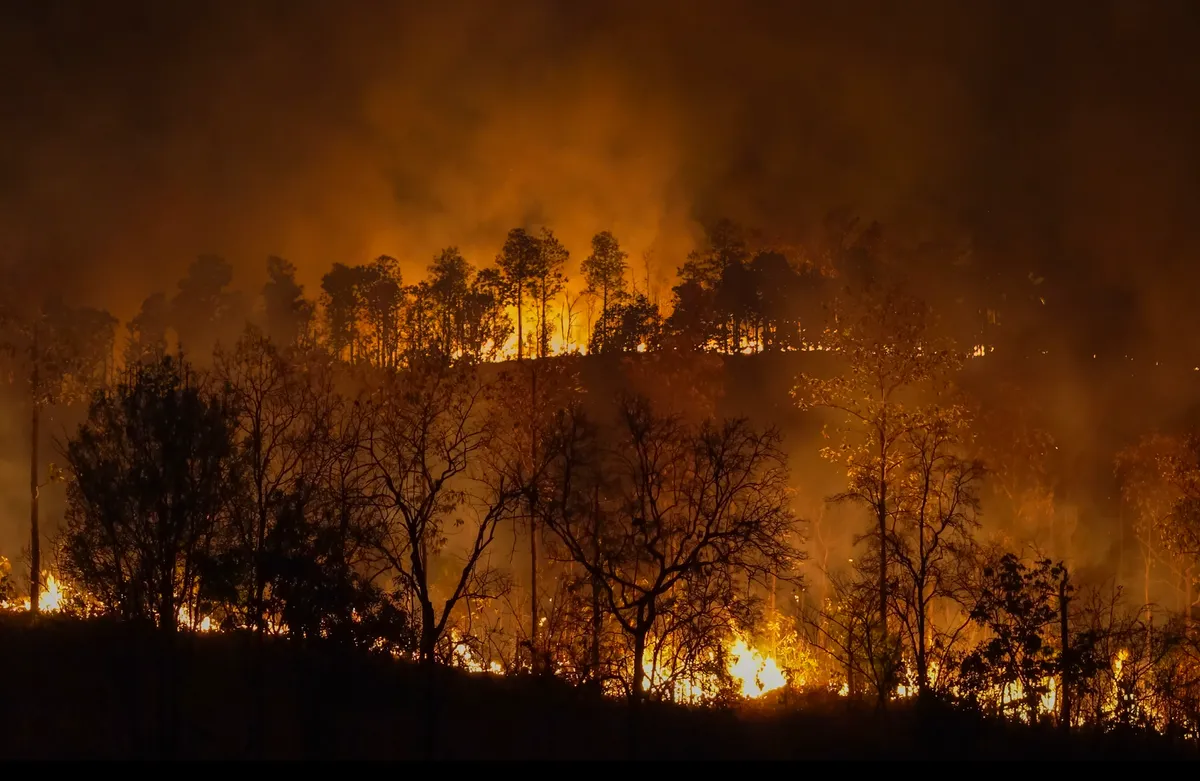We’ve had Living Planet, Blue Planet, Green Planet and even Frozen Planet, but we’ve never had Flammable Planet. That would be the start of my elevator pitch to a BBC commissioner, and it wouldn’t be a depressing deep dive into how we’re all going to hell, rather a humbling reminder of the complexity of Earth’s systems.
While climate change has narrowed our attention, to the point of obsession, on the carbon cycle, atmospheric oxygen has received very little airtime, yet has its own fascinating and important story to tell.
With volcanic eruptions, red-hot rivers of lava, meteor collisions and lightning strikes, our young planet had plenty of spark, but without vegetation there was nothing to burn and without oxygen, nothing could burn.
While climate change has narrowed our attention, to the point of obsession, on the carbon cycle, atmospheric oxygen has received very little airtime, yet has its own fascinating and important story to tell.
Cyanobacteria are thought to have been the first oxygen-producing organisms, appearing in the fossil record three billion years ago. Their effect on the Earth’s atmosphere took a while to get going, but after slowly gathering momentum the Great Oxidation Event took place around 2.5 million years ago and marked a sudden rise in atmospheric oxygen. This saw the mass extinction of many simple anaerobic life-forms, and set the stage for complex life, as we know it, to thrive.
- Photosynthesis: what it is, how it works and why it fuels life on earth
- How do plants breathe underwater?
Time passed (a lot) and by 470 million years ago, the first plants were making their move onto dry land, marking the ‘glory days’ of plant diversification. Wood, branches and leaves of different size, shape and moisture-content began to appear, seeding terrestrial ecosystems with fuel for fire.
Fast-growing angiosperms (flowering plants) benefitted from their flammable world by being able to outcompete slow-growing gymnosperms (non-flowering plants), and colonise new territory after a fire had cleared the area.

The co-evolution of fire and plants runs deep, and continues today: fire-prone ecosystems cover an estimated 40 per cent of Earth’s land surface. Trees such as lodgepole pine, giant sequoia and eucalyptus are not only fire-adapted (possessing thick, fire-retardant bark, for instance) but are fire-obligates, requiring wildfires to complete their life-cycles by aiding or triggering seed dispersal and germination.
The co-evolution of fire and plants runs deep, and continues today.
The oldest fossil evidence of a wildfire was found in Ludford, a world-renowned fossil site and the English-Welsh border’s answer to the Burgess Shale (the famous fossil-laden deposits in the Canadian Rockies). Here, the charred and preserved remains of a small, unassuming leafless rhyniophyte plant date to roughly 420 million years ago. And there are plenty more clues that tell stories of Earth’s fiery past. Scars on petrified tree rings tell of extent and frequency; deposits of fossilised charcoal – which requires cooler fires – reveal levels of intensity.
The highs and lows of wildfire activity match the highs and lows of atmospheric oxygen over time and, interestingly, the fire-fossil record hints at a possible ‘fire window’. At present, atmospheric oxygen sits at around 20 per cent. It’s thought an increase in oxygen levels of up to 30 per cent wouldn’t bring much change in wildfire activity, but above that, the atmosphere would be too flammable to preserve terrestrial vegetation. Conversely, a fall in oxygen levels to just 16 per cent would prevent wildfires from being able to take hold and spread.
Happily, atmospheric oxygen is not at the mercy of human activity. It is locked in a dance between rock erosion and the phosphorous cycle. That is another story for another time, but for now serves as a tantalising hint of Earth’s complexity.
While the attention on carbon emissions is not completely misplaced, I would prefer to see an approach that isn’t solely focused on this one metric; a more holistic view that bows to the raw forces of nature and the intricate dance of Earth’s systems.

